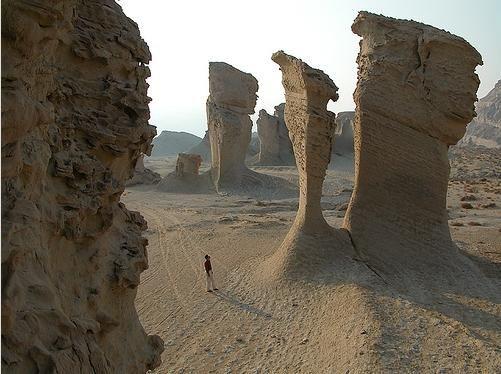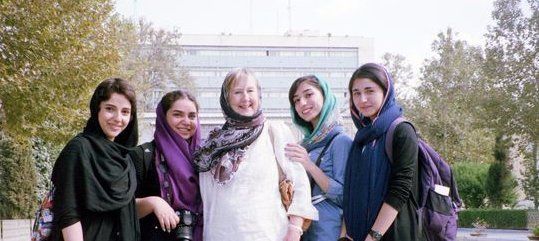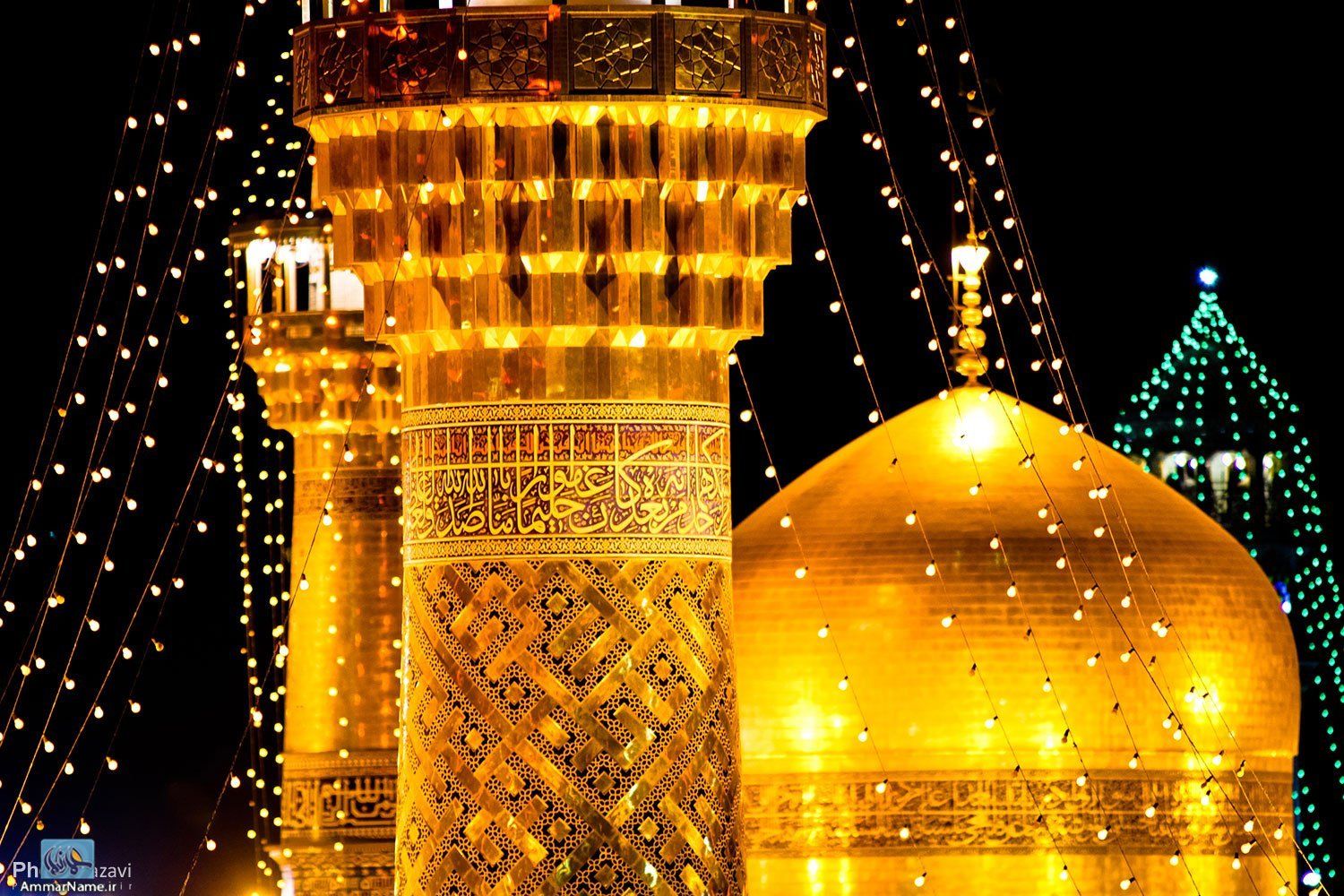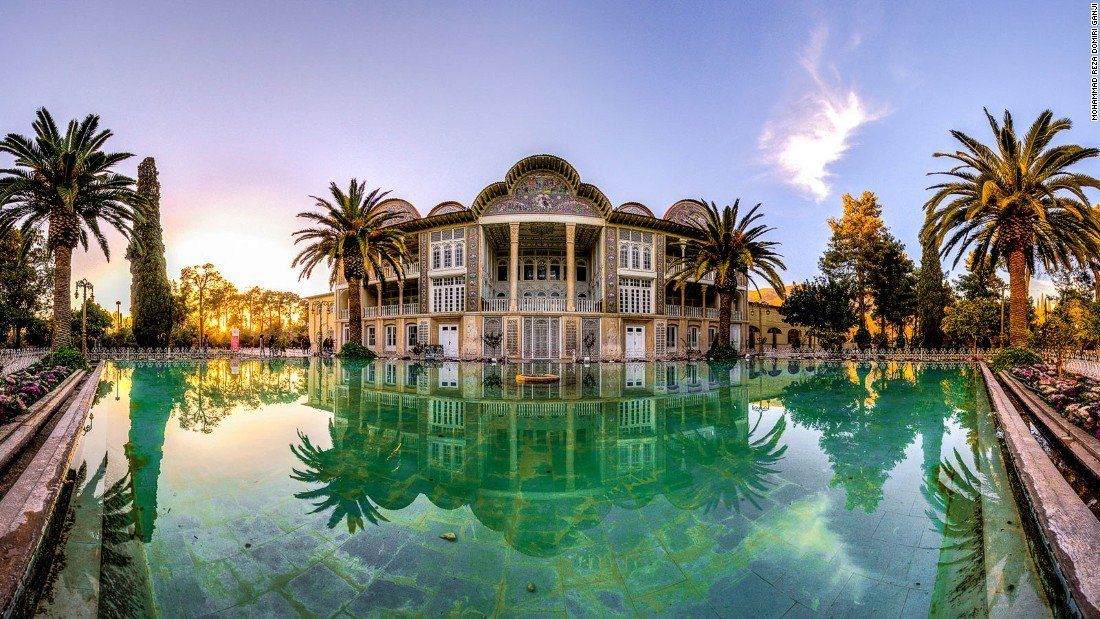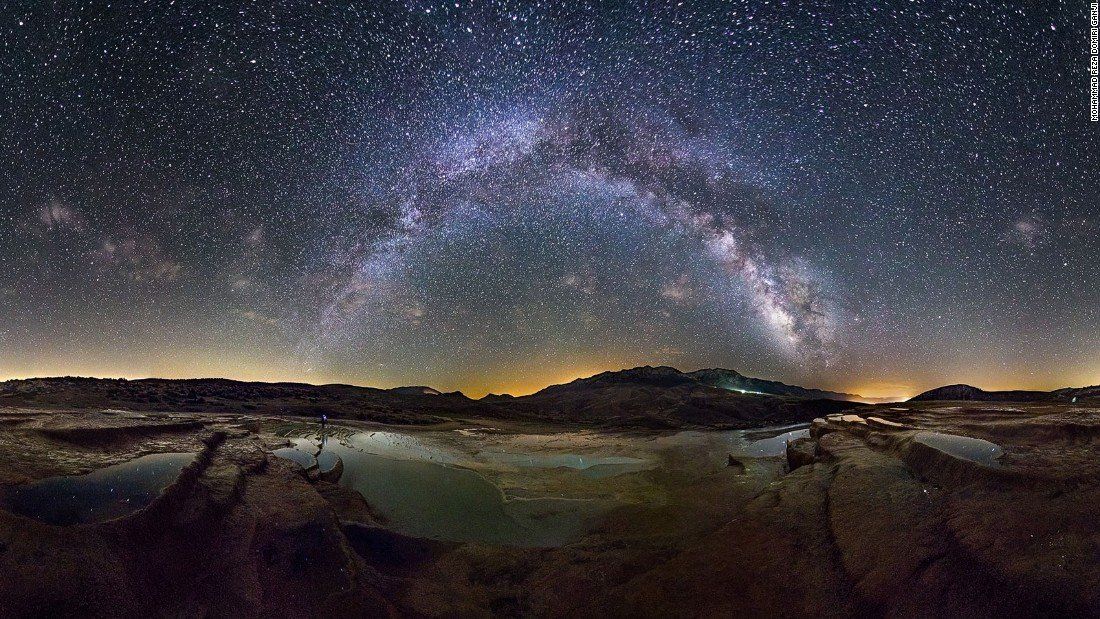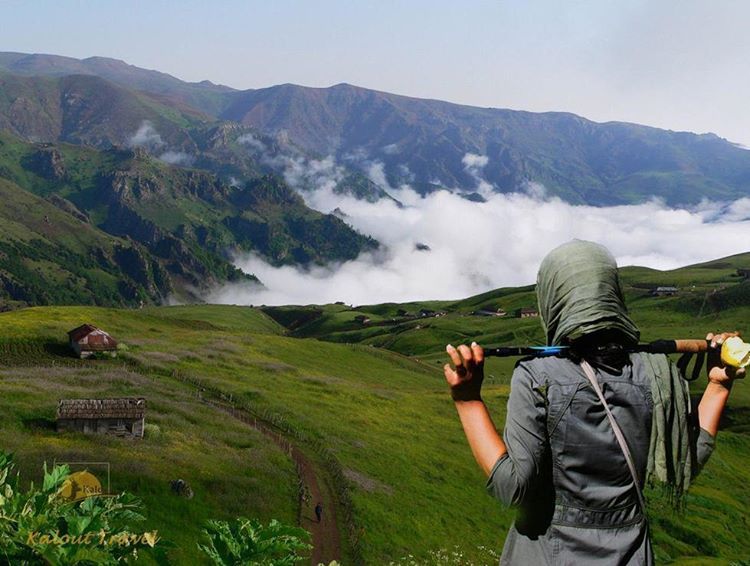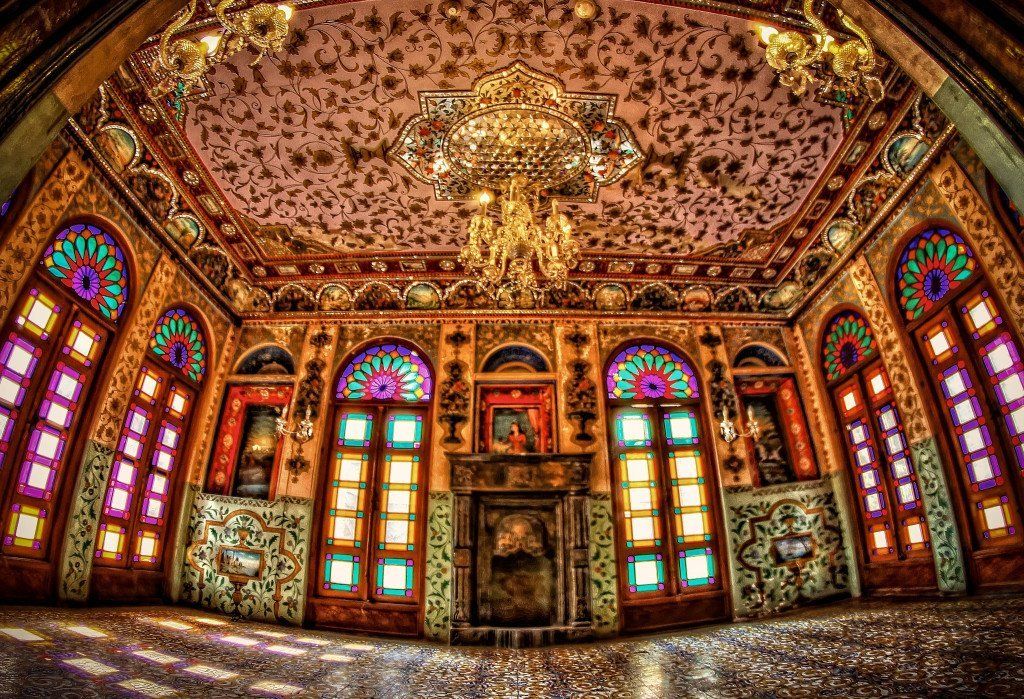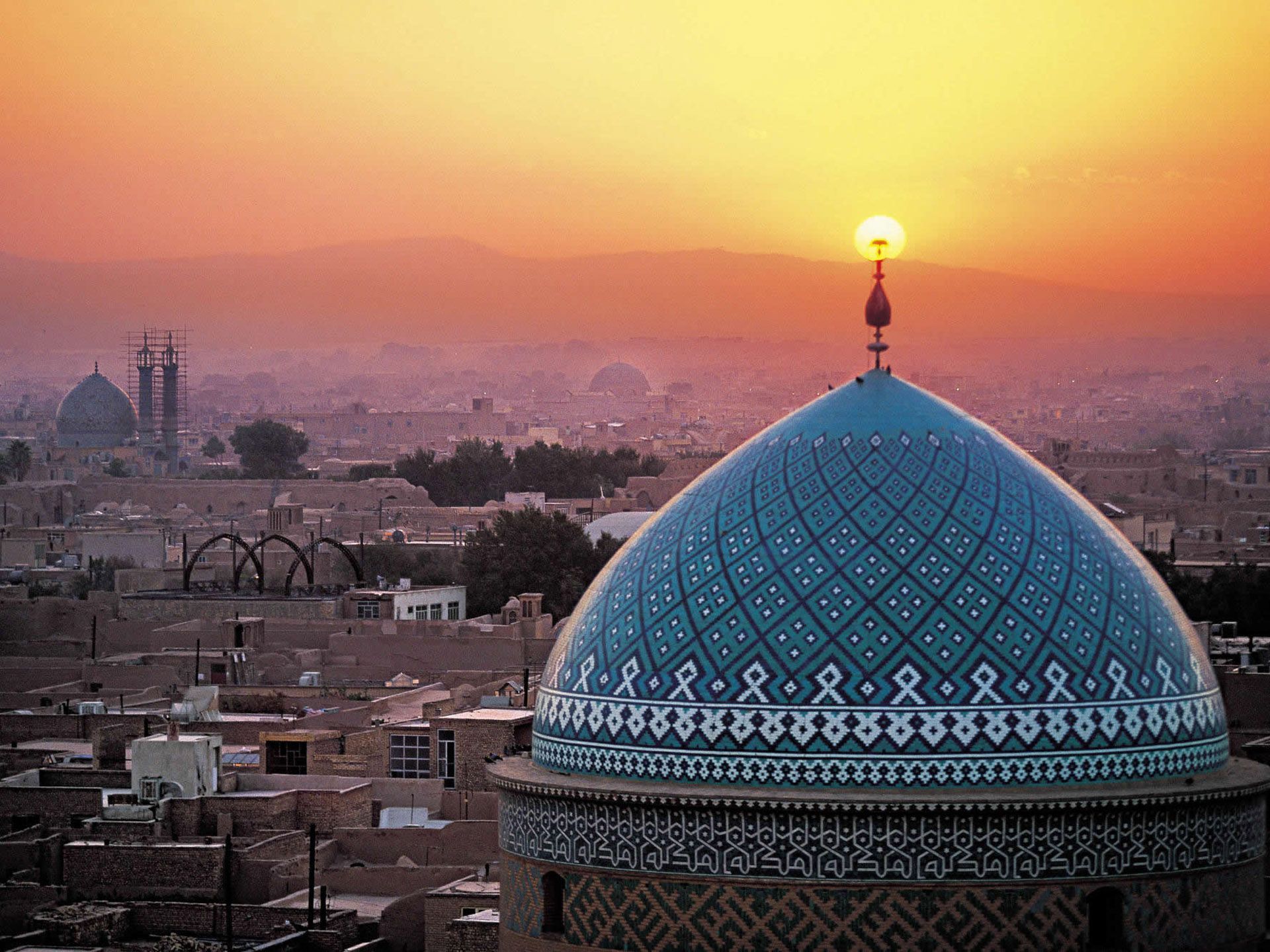Kerman Attractions
Masjed-e Jame
(Jame Mosque) Masjed-e Jame or Muzaffari is one of the historical monuments of the 14th century CE, famous for its magnificent portal, its mihrab and mosaic-tile decorations, and its historic inscription, which bears the date 1349 CE. On the western side of the mosque, there is an ivan which originally dates from the times of Ali Muzaffar. It has a wonderful blue faience featuring shades of blue from turquoise to ultramarine, creating a vertical horizon of smooth shimmering tiles. However, the mosque has been repaired in later periods, including repairs of the main part of its mihrab, carried out in the reign of Shah Abbas II of Safavid Dynasty. The wall of the Mihrab (altar) and the central dome are also decorated with admirable geometric compositions. The altar is open to the public. The south-western portal of the mosque also belongs to the Safavid period. The minaret and the Muadhin`s cage of the Masjid have been repaired under Karim Khan of Zand Dynasty, and its mihrab is one of the outstanding parts of this monument. Some essential repairs and decorative and tile works were completed in the year 1940. It is considered to be the most fabulous structure in the city and is located in the main square of "Shohada".
Ganjali Khan Complex
It was one of the famous rulers during the reign of Shah Abbas of Safavid. As the ruler of Kerman province he constructed many monuments and buildings. Ganjali Khan complex is composed of a school, a square, a caravanserai, a public bath, a water reservoir, a mint house, a mosque and a bazaar. A number of inscriptions laid inside the complex indicate the exact date when these places have been built. Out of Ganjali Khan complex, the Khan public bath located in the grand bazaar of Kerman serves as an anthropology museum today and attracts an increasing number of Iranian and foreign tourists. This is a unique work of architecture with beautiful tile works, paintings, stuccos, and arches. The bath rendered service no later than 60 years ago. In the closet section and main yard of the bath there are many life-like statues. These statues were designed at Tehran University's faculty of fine arts in 1973 and then transferred to this museum. This complex has been built during the Safavid era (1501 - 1722 CE) enjoying a modern architectural style of the time. This bath is an association of architecture and application of an array of constructional materials in an appropriate space with totally popular approaches. The architect of the bath and the complex is a master from Yazd city named Mohammad Sultani.
Gonbad-e Jabaliye
At the edge of town is Gonbad-e Jabaliye, an octagonal and very old structure of unknown provenance. Some scholars date it to the 2nd century AD and think it may have been an observatory. Others say it was a tomb. Whatever its function, it is remarkable because it is constructed of stone rather than the usual brick; though the double-layered dome, added 150 years ago, is brick. Today it houses a museum of old gravestones.
Moshtari-ye Moshtaq Ali Shah
The attractive Moshtari-ye Moshtaq Ali Shah is the mausoleum for Sufi mystic Moshtaq Ali Shah, and other Kerman notables. Moshtaq Ali Shah was renowned for his singing and is apparently responsible for adding the fourth string to the setar (which literally means ‘three strings’). He eventually fell so far out of favour with the local religious community that he was stoned in the Masjed e-Jameh. Most of what you see, including the prominent blue-and-white-tiled roofs, dates from the late Qajar period. Yakhchal Moayedi The Safavid-era Yakhchal Moayedi is a well-preserved, conical adobe structure that was used to store ice. The ice store was, and in some part still is, surrounded by gardens. The gardens would fill with water during winter, and when the water froze the ice would be slid into the yakhchal for use in warmer months. It is now a theatre space that doubles as a tourism office, with a few brochures.
The Arg-e Bam
It was the largest adobe building in the world, located in Bam, a city in the Kermān Province of southeastern Iran. It is listed by UNESCO as part of the World Heritage Site "Bam and its Cultural Landscape". The origin of this enormous citadel on the Silk Road can be traced back to the Achaemenid period (6th to 4th centuries BC) and even beyond. The heyday of the citadel was from the 7th to 11th centuries, being at the crossroads of important trade routes and known for the production of silk and cotton garments.
The entire building was a large fortress in whose heart the citadel itself was located, but because of the impressive look of the citadel, which forms the highest point, the entire fortress is named the Bam Citadel.
On December 26, 2003, the Citadel was almost completely destroyed by an earthquake, along with much of the rest of Bam and its environs. A few days after the earthquake, the Iranian President Mohammad Khatami announced that the Citadel would be rebuilt.
The planning and architecture of the citadel are thought out from different points of view. From the present form of the citadel one can see that the planner(s) had foreseen the entire final form of the building and city from the first steps in the planning process. During each phase of building development the already-built part enjoyed a complete figure, and each additional part could be "sewn" into the existing section seamlessly.
The citadel is situated in the center of the fortress-city, on the point with widest view for security.
In the architectural form of Bam Citadel there are two different distinguishable parts:
The rulers' part in the most internal wall, holding the citadel, barracks, mill, 4-season house, water-well (dug in the rocky earth and about 40 metres [130 ft] deep), and a stable for 200 horses.
The ruled-over part surrounding the rulers' place, consisting of the main entrance of the entire fortress-city and the bazaar alongside of the North-to-South spinal axis (which connects the main entrance to the citadel), and around 400 houses with their associated public buildings (such as a school and sport place).
Among the houses, three different types are recognizable:
Smaller houses with 2-3 rooms for the poor families.
Bigger houses with 3-4 rooms for the middle social class, some of which have also a veranda.
The most luxurious houses with more rooms oriented in different directions suitable for different seasons of the year, together with a big court and a stable for animals nearby. There are few of this type of houses in the fortress.
All buildings are made of non-baked clay bricks, i.e. adobes. Bam Citadel was probably, prior to the 2003 earthquake, the biggest adobe structure in the world.
The Citadel was used as the major location site for Valerio Zurlini's film of The Desert of the Tartars.
Other attractions:
Shahdad Kalouts , Shazdeh Garden , Rayen Castle , Ancient Bam (Arg-e Bam) , Shahdad Desert (Kalut Shahdad) , Aramgah-e Shah Ne’matollah Vali , Gonbad-e Jabaliye , Sanati Contemporary Arts Museum , Rageh Canyon , Harandi Museum , Stone Garden , Fathabad Garden , Jabalieh Dome
Further Reading:
























